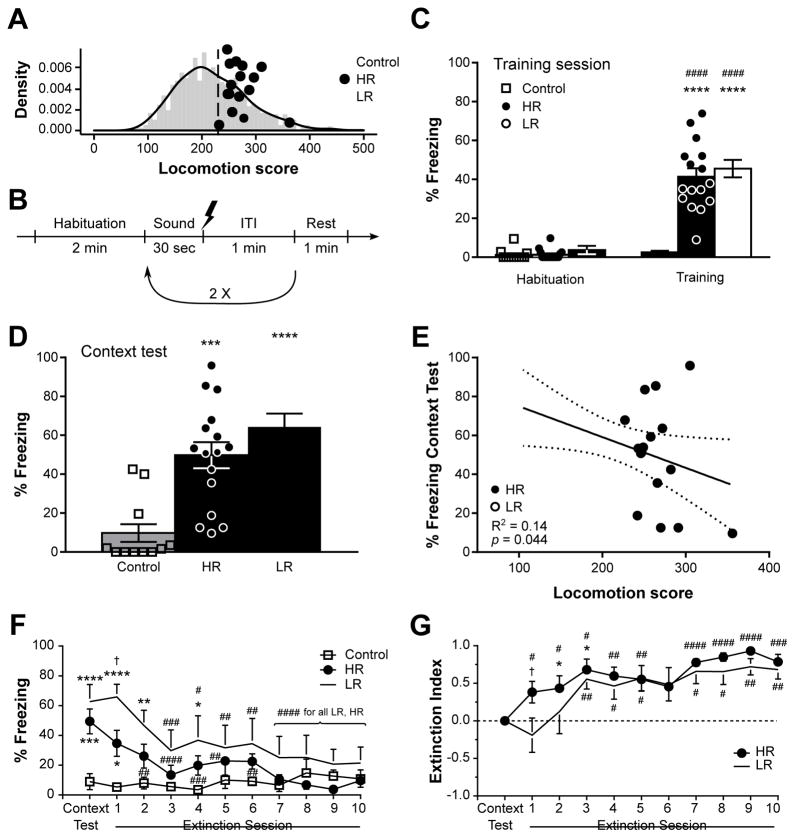Figure 1.
Contextual fear memory in high-(HR) and low-responders (LR) rats. In (A) the locomotion scores of each rat are depicted against the normal distribution of an extensive population of rats (n = 919). In the training session detailed in (B) and performed in context A, rats were exposed to a total of 3 repeats of a sound co-terminating with a shock (except for “Control” group). While the percentage of time spent freezing during the training session (C) revealed no differences between HR and LR rats, LR animals spent slightly more time freezing during the context test (D) performed 48 hrs later. A linear regression analysis revealed a negative link between locomotion scores and freezing behavior during the context test (E). Beginning on the following day, rats were subjected to a daily contextual fear extinction for 10 days, which revealed faster extinction in HR animals as revealed by analysis of percentage of time spent freezing (F) and index of extinction (G). Each individual data point is depicted in panels (A,C–E), whereas n = 6–8 in (F,G). Throughout the figure, while white squares represent control animals, black circles and white circles represent HR and LR rats, respectively. In (C–F), *p < 0.05, **p < 0.01, ***p < 0.001, ****p < 0.0001 vs Control of same session; #p < 0.05, ##p < 0.01, ###p < 0.001, ####p < 0.0001 vs same phenotype in “Habituation” or “Context Test”; In (G), *p < 0.05 vs “Context Test”, #p < 0.05, ##p < 0.01, ###p < 0.001, ####p < 0.0001 vs an index of “0”. †p < 0.05 HR vs LR. ITI: intertrial interval. Data are represented as mean ± SEM.

